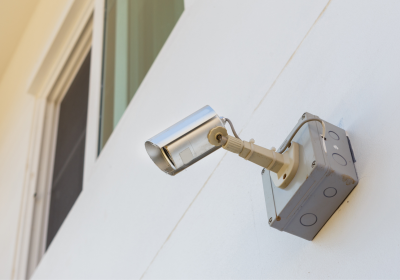Hotels run best on efficient, reliable guest services. And that’s what EOS thermostats can provide. But switching from your hotel’s current system is always a big decision. So you must understand the capabilities and the costs. Here are some answers to a few questions about the value of the EOS thermostat system so you can make an informed decision yourself.
What Does the Eos Thermostat Do for My Business?
Yes, it accurately maintains room temperature, but it does much more than that. A smart thermostat can learn how to optimize guest experience while saving on utility bills over time. But it is also remotely accessible by guests and hotel staff from a smartphone or other device, enabling a more customizable experience.
Its fusion sensor uses combined data from multiple sensors to detect human presence more reliably than industry standard infrared sensors, giving the EOS thermostat the ability to conserve energy when people aren’t present and provide comfort when they are. Some added benefits of this feature include staff safety tracking, asset tracking, and even guest tracking to optimize guest services such as room cleaning.
Through a built-in IoT hub, EOS thermostats can wirelessly connect to other devices, so you can also use them to control room lighting and other automated systems. An internal Bluetooth beaconing system enables micro-location capabilities.
What Are the Upfront Costs of Eos Thermostats?
A smart thermostat is going to cost more than a standard thermostat initially. So you will see a higher initial investment, but perhaps not as high as you fear. EOS is a single component system that fits seamlessly with virtually any existing back box; this makes it ideal for retrofitting or new construction. No new wiring, gateway, or any other hardware is needed.
So, you’re left with a lean system with minimal hardware and installation costs that set you up to save much more money in the long run.
What Ongoing Costs Are There?
The interface is intuitive enough to allow for in-house monitoring and adjustment — you can rely on your current staff to handle most maintenance issues instead of paying for outside monitoring. If you do need help with maintenance or troubleshooting, your installation company should be available to help.
Regarding utility costs, the EOS system can save as much as 35% on utility bills over traditional systems.
What Are the System Requirements?
EOS thermostats are wireless, requiring no cabling, and installation is fairly straightforward. They work with both WiFi and cellular networks. They are Bluetooth and Zigbee compatible. This makes them a very versatile system that can be up and running instantly and are resistant to coverage interruptions and outages.
Their learning/data storing features are cloud-based, providing security from server downtime.
As stated earlier, the EOS thermostat has a universal fit, which almost certainly makes it compatible with your current thermostat fixtures.
How Easy Is It To Use?
The EOS thermostat is designed to be used by guests and hotel staff with minimal training. It features an interactive OLED touchscreen and is accessible from other connected devices such as smartphones, tablets, or computers. When combined with a secure integration hub from Volara, voice commands can even control them.
For anyone who has used home automation systems before, this system should be straightforward to learn. For others, getting comfortable with the controls may take a bit of training.
Will This System Become Obsolete Within Three Years?
We are in an age of rapid technological advancement. It’s impossible to say what will come in the future. Still, Interel’s EOS thermostats were designed with upgrade paths for additional feature add-ons that may be available in the future. So chances are strong that the EOS system you install today will provide long-term value.
What’s New With Eos Thermostats?
EOS is similar to other smart thermostats in some ways but unique in others — solving several problems unique to the hospitality industry.
- While a home system can gather data about users over a much longer period, a hotel system has to rely on other inputs. That’s why the multifaceted fusion sensor is such a revolutionary advancement. Never before has it been possible to zero down on energy management efficiency like this.
- With the Apple iBeacon technology, EOS is the first hospitality room-control system to provide infrastructure for micro-location Bluetooth Beaconing.
- EOS offers unprecedented multi-room automation control that can grow over time.
Is the EOS Thermostat Worth It?
Replacing your traditional thermostats with EOS thermostats will include a noticeable investment. It will take some training your staff didn’t need before. But in the long run, it’s hard to conceive of a hotel that wouldn’t benefit from the vast list of additional capabilities and energy savings EOS provides.
Look at your hotel’s current capabilities as far as room automation. Are you in a position to provide your guests with competitive connectivity into the future? Could saving as much as 35% on energy costs benefit you? The sooner you make a move, the sooner you will begin to reap the benefits.
Groove Technology Solutions Provides Seamless Integration and Support
We have been providing connectivity solutions for the hospitality industry for many years. Groove has become a certified Interel EOS installer because we know it’s the present and future for hotel energy management. We’d be happy to answer any questions you may have about the technology or how this technology is evolving, and where it might take hospitality in the future.
We can install your EOS thermostats, train your staff, and provide support for the long haul as you continue to upgrade your system to offer the latest and best amenities for your guests.
Contact us today to get a quote for your hotel.


